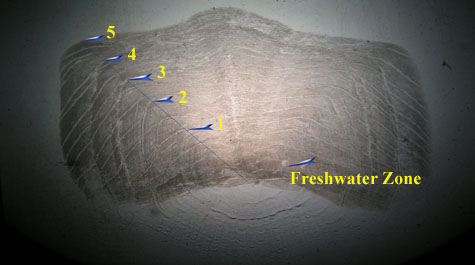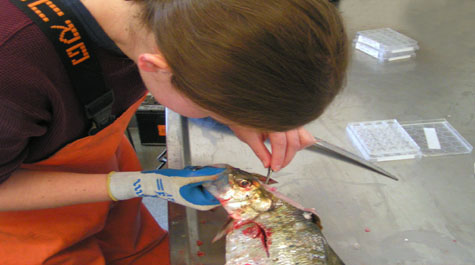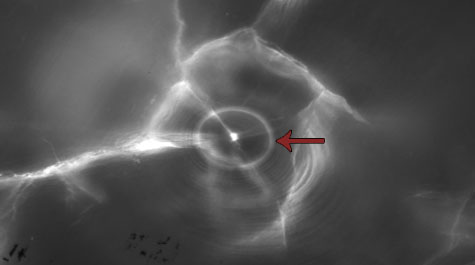Fish Processing and Analysis
Biological Data
All adult American shad and river herring collected are weighed and measured using an electronic fish measuring board. Measurements from the board are recorded and stored in a data file for later analysis. Every fish is measured for: fork length, total length, sex, gonad stage and weight. Scales are taken from each fish to be used for age determination and spawning histories. Otoliths (ear bones) are also taken from adults to be scanned for hatchery marks or used for age determination.
All juvenile American shad and river herring are weighed and measured using an electronic fish measuring board. Every fish is measured to the nearest millimeter for fork length and weighed to nearest gram.
Ageing Scales
Scales are removed from the mid-lateral area just below the dorsal fin on the left side of each fish. Before the scales can be processed, they first have to be cleaned. Scales are soaked in water and scrubbed to remove any debris that can interfere with reading. Several scales from each fish are mounted on a 3" x 5" acetate sheet. The sheets are then pressed in a heated hydraulic press with a force of 16,000 pounds for two minutes. The scales are removed from the sheet, leaving an impression of the scale. The sheets are then read on a microfilm projector, using Catings Method, a method introduced by James Cating in 1953 that uses scales to determine the age of American shad. Fish scales have annual rings or annuli, much like the rings on a tree. Every year during periods of slow growth annuli are formed. By counting these marks scientists can determine the age of the fish. Scales are also used to count spawning marks. Spawning marks are broken or jagged marks caused by erosion when the fish enter freshwater.
Otolith Scanning
In 1994 the Department of Game and Inland Fisheries (VDGIF) and the US Fish and Wildlife Service (USFWS) began a hatchery-restocking effort on the James and Pamunkey rivers. Currently stocking is only performed on the James River. Adult shad from the Pamunkey River are used as brood stock; eggs are stripped and fertilized in the field. The larvae are then reared in the VDGIF and USFWS hatchery facilities. After the fry have hatched they are immersed in an oxytetracycline (OTC) solution that marks the otoliths with a distinctive epi-fluorescent ring. This allows scientists to distinguish hatchery fish from wild stocks. Since fry are released from many sites along the East Coast, different marking sequences are used for each river. In 2003 VDGIF began a new hatchery-release program on the upper Rappahannock River using the progeny of Potomac River brood stock. The goal is to restore American shad to historical spawning areas that were previously blocked by Embrey Dam.
To scan for hatchery marks, otoliths are mounted on slides then carefully ground and polished using wet laboratory-grade sandpaper. This is very delicate work; the otoliths can easily be cracked or broken. Once both sides of the otolith have been ground they can be read using an epi-fluorescent microscope. When the ground otolith is exposed to fluorescent light the OTC mark will appear as a bright ring. The sequence of rings is used to determine what river system the fish was released from.



